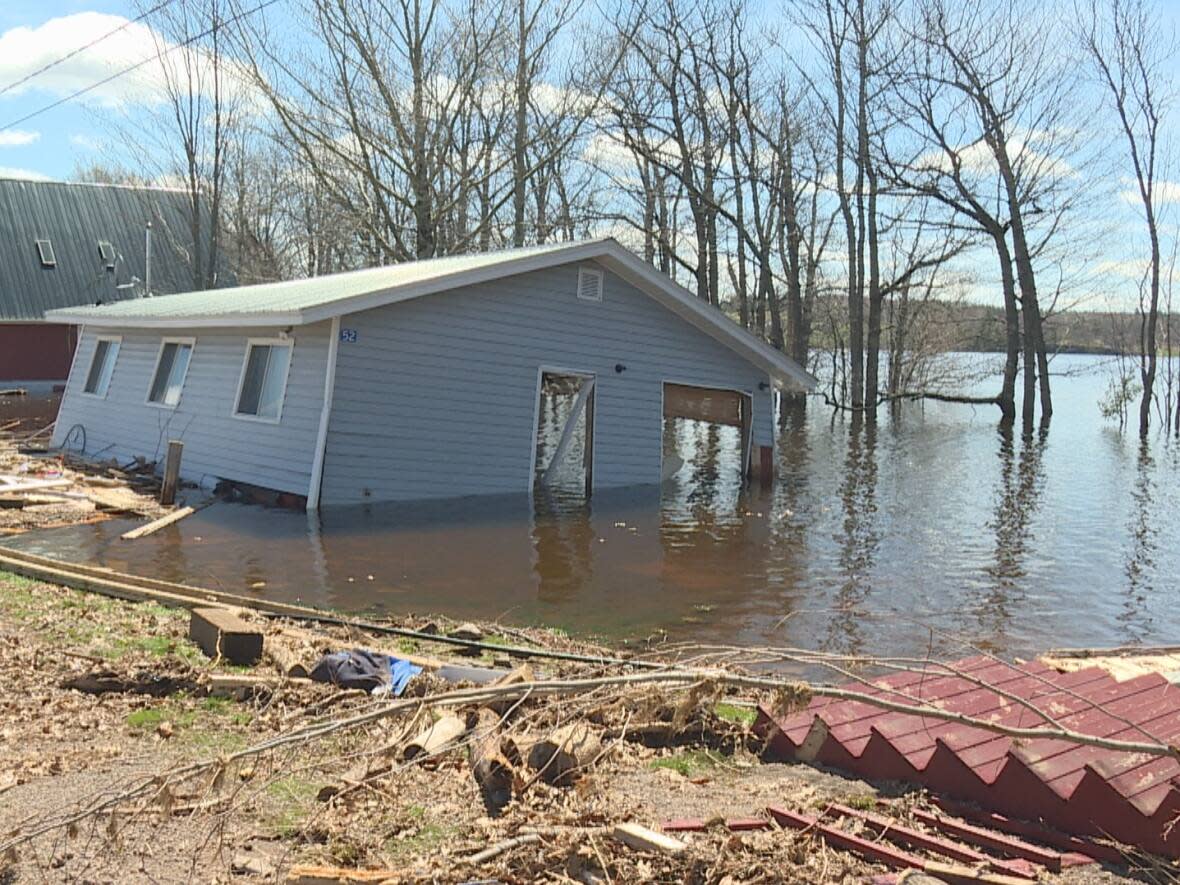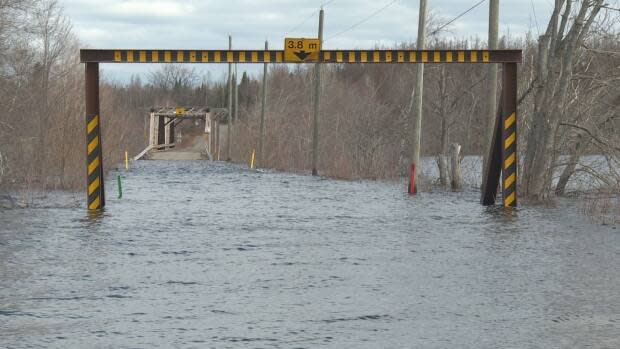With flood season approaching, province launches annual River Watch

With the first day of spring less than a week away, the province has launched the annual River Watch program, an online platform that shows water levels in the St. John River and its tributaries.
Kyle Leavitt, the director of the New Brunswick Emergency Measures Organization, said there is a chance the St. John River will flood this year with more rainy weather on the way, rising temperatures and snow and water accumulating up north.
And there is still more snow coming for the province, with Environment Canada issuing snowfall warnings for many regions Tuesday night into Wednesday.
Leavitt said there doesn't seem to be much of a change at the moment from recent flood seasons, and the snow pack appears to be on par with last year.

"We're hoping that we don't have major overland flooding this season," said Leavitt. "But you know, hope is not a plan. We have to expect possibly the worst."
He said the unpredictability of weather makes the flood risk hard to predict. A quick rise in temperature along with heavy rain could raise the risk significantly, said Leavitt.
He recommends New Brunswickers use the River Watch platform to monitor their risk and to be prepared with extra food and water in case of washed-out roads or power outages, and to move items to higher ground to mitigate damage to property.
New Brunswick recently made changes to its disaster financial assistance program, expanding the eligibility for government buyouts, but capping the amount of assistance a property owner can claim for the same type of disaster.

Don Fox, the director of air and water sciences at the Department of Environment and Local Government, said it is still far too early to predict what the flood season will look like this year.
"We could see a very severe flood season this year or we could have a great season ... everything depends on the weather and weather forecasts can change," said Fox.
He said ice jams can also happen at any time and with severe ice jams, water can rise quickly.
Fox said the department's hydrology centre is responsible for collecting data such as precipitation, temperature, snow depth, ice movement, and water levels and flows.

The centre will also provide five-day forecasts and identify potential concerns during flood season, said Fox. As of now, there is no push notification system for the platform.
But because flood risk can't be predicted too far in advance, Fox advises New Brunswickers living along the water to stay vigilant until the snow is completely melted and water levels return to normal.
He said people in areas that have experienced flooding in the past should be particularly careful.
Communities along the St. John River saw record-setting floods in 2018 that led to millions of dollars in damage to property. In 2019, homes were damaged and communities were cut off from road access as waters breached the banks of the river.
Fox said the latest snow survey for early March shows that snow depths increase across the province from south to north. A small area of southern New Brunswick has depths ranging from 16 to 30 cm, he said, and northwestern New Brunswick has depths of 76 to 90 cm. Fox said these numbers are comparable to last year.

The water contained in the snow pack also increases from south to north. Fox said a small area in the southern region has between 25 and 50 mm, while the northwest has between 176 and 200 mm. Fox said in general, there is more water in the snow pack this year than last.
Still, he said the amount of water is normal compared to the very long term average.
"Regardless of the state of the snow pack, there could be a significant flood, no flood at all, or somewhere in between. At this stage, there's no way to be sure," said Fox.
"We are always ready and we work closely with the River Watch team to provide updates to them and to the public as soon as new information becomes available."


